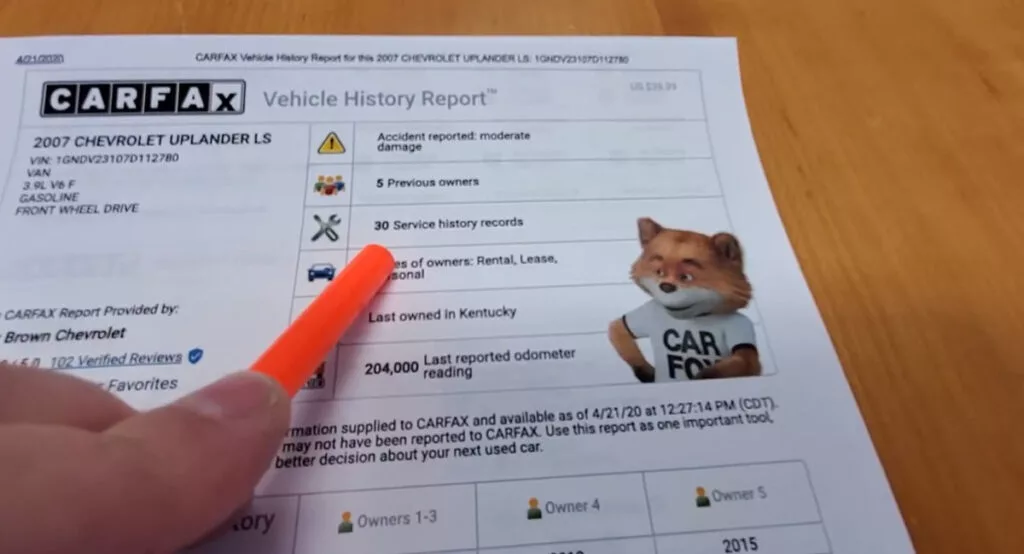Before we talk about practical ways to check a used car, let’s talk about what to look for. Since the used car market started, it has grown at a rate that has never been seen before. According to polls, the number of people who buy used cars has nearly tripled when compared to those who buy new cars.
As a result, many individuals are being lured to acquire used cars, which is slowly becoming a trend in the automobile business.
However, this does not imply that customers will take the process of choosing secondhand vehicles for granted. As a result, it is critical to be aware of the various methods for inspecting the vehicle prior to the transaction’s completion.
Here are some recommendations for people who want to know how to Check a Used Car:
Take a test drive for check a used car
A test drive is the best approach to determine the condition of the vehicle. The buyer will be able to see the actual state of the car and its components, such as the brakes and accelerator, in this manner.

Also, even if the test drive is only a short trip, the buyer will be able to identify any “clunks” or rattles on the secondhand automobile right away.
Inspection by a personal
In addition to test-driving, the buyer should verify the intricacies of the body make-up and its condition firsthand.
The buyer will be able to see any signs of rust and damage, as well as the condition of the tires and any oil leaks.
Check current mileage
In a typical year, an average user or driver will go 12,000 to 15,000 miles. By glancing at the mileage, the buyer will be able to determine the car’s approximate age.
Check the mechanics
Using the assistance of a mechanic to inspect the condition of a used car prior to purchasing is another option. This may incur some costs for the buyer, but the money will undoubtedly be used for a worthy cause. The mechanic is the finest person to analyze the technical and professional condition of a vehicle quickly.
CARFAX History Report
Knowing the car’s history is also one of the greatest ways to determine its true condition. As a result, it is critical for the buyer to obtain a CARFAX report in order to learn all of the data about the used car’s past.

Take the necessary precautions and do your homework before making a purchase. This will ensure a pleasant car-buying experience.
FAQs about Check a Used Car
How to Test Drive a Car
- Look for dents, cracks, and rust on the vehicle’s body. Look for nicks and cracks on the windshield.
- Examine the tires for evidence of uneven wear and remaining tread life. The latter could suggest a problem with alignment.
- Just use turn signals and brake lights to see how they work.
- Check for any unusual noises, such as rattling, clicking, or whining, and make sure the engine is running strong.
- Check that the radio, heater, and air conditioner are all working properly.
- Check any warning lights on the dashboard and make sure the gauges operate. The temperature gauge should be at the middle after the car has warmed up. Overheating might be indicated by a temperature that is closer to “hot.”
- Ensure that the seats are comfy and that the ceilings are sufficient.
- When you come to a complete stop, pay attention to how the brakes feel. Are they jittery, sticky, or sloppy?
- Grinder or squeaking noises indicate worn brake pads and rotors.
- What is the car’s response to potholes and bumpy roads? Drive gently and listen for rattles or knocks that could indicate a problem with the steering.
- How about making 90-degree turns? They should be navigated by the car without difficulty. Power steering or suspension issues might cause resistance or tugging.
- Is the car quick to accelerate and shift from gear to gear? Engine stuttering is a red flag.
- Find the vehicle’s blind spots. This is a tip that applies equally well to both new and secondhand automobile test drives.
- Switch lanes numerous times, paying attention to how the steering behaves at high speeds.
- Check for steering pull to one side or the other, which could signal suspension or alignment issues.
- When traveling on the highway, pay attention to what’s going on around you. Are there any squeaks, whines, or rattles coming from beneath the engine?
- Drive up and down a hill if feasible to ensure that the automobile upshifts and downshifts properly.
- Make sure the steering isn’t tight and that you can parallel park the automobile with precision.
- In order to identify a faulty transmission, check to see if the vehicle smoothly transitions from drive to reverse.
- It is important to pay attention to the car’s responsiveness, especially in reverse gear.
- If the vehicle is a larger truck or SUV, get used to fitting it into a conventional parking place.
How to check Mileage of used car?
We can determine the mileage of used vehicles using service records, and if not, we can gain a rough sense of the used car’s look and interior usage.
After reading this, we hope you know the answer to the question “Check a Used Car” now. To ask more questions, leave a comment below. We’ll be very clear about how we can help you. It’s here if you need a review of the 2022 Range Rover. Thank you very much.
